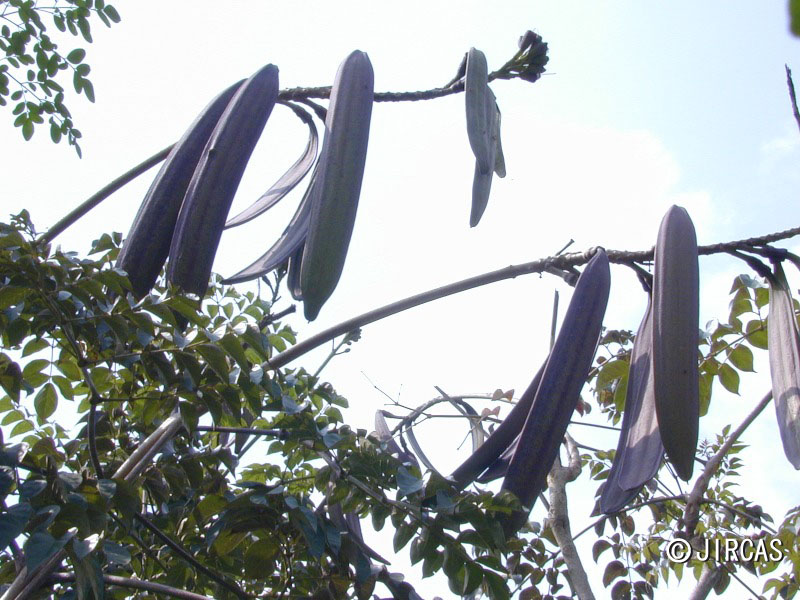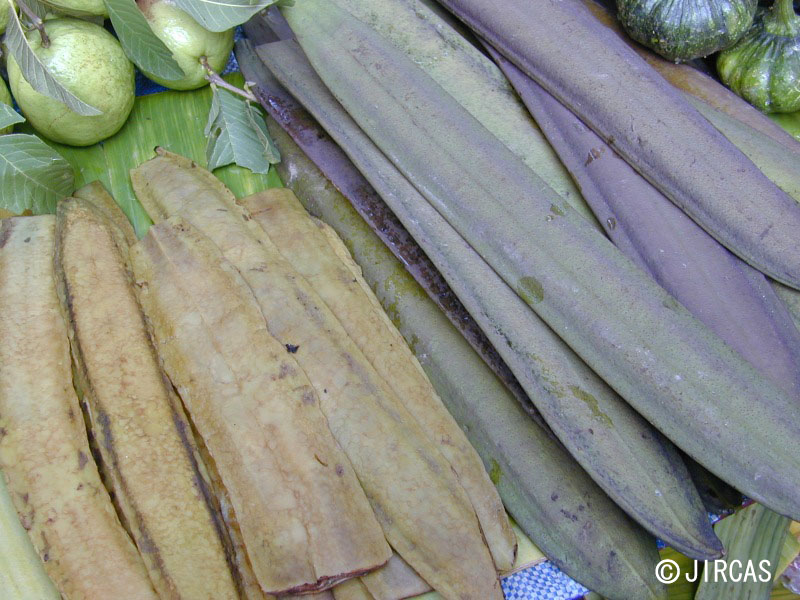Oroxylum indicum (L.) Kurz. (Bignoniaceae)
- Scientific name
- Oroxylum indicum (L.) Kurz.
- Family name
- Bignoniaceae
- Common name
- Midnight horror (English); sorizayanoki (Japanese)
- Local name
- Phe kaa
Semi-deciduous, rarely branched tree up to 15 m tall, trunk up to 25 cm in diameter, bark grey, with prominent leaf scars, twigs thick, pithy, later hollow, lenticellate. Leaves crowded at top, imparipinnate, 3–4 times pinnate, 0.5–2 m long; petiole long, rachis swollen at points of insertion; stipules absent; leaflets ovate to oblong, 4–11 × 3-9 cm, base cuneate or mostly oblique, apex acuminate, entire, with glands scattered on lower surface. Raceme terminal, 25–150 cm long, peduncle and rachis partitioned. Flowers bisexual, pedicel 2–4 cm long, bracteolate; calyx coriaceous, campanulate, bud containing water, 2–4 cm long, 1.5–2 cm in diameter, brown or dirty violet, becoming almost woody in fruit; corolla funnel-shaped, c. 10 cm long, lobes 5, subequal, margin wrinkled; reddish outside, yellowish to pinkish inside; stamens 5, inserted in throat, hairy at base. Ovary superior, several, 2-celled. Fruit a hanging capsule, sword-shaped, 45–120 × 6–10 cm, valves flat, almost woody, ultimately black. Seeds: 5–9 × 2.5–4 cm, including membranous, transparent wing.
Tolerates a wide range of dry and wet climates and soil conditions. Occurs mainly at elevations below 1,000 m a.s.l. Propagated by seed sowing or root division.
Young pods are grilled, the outer layer is scraped off, and the interior is sliced and served with nam phrik (dipping sauces), cooked in curries, or fried with shrimp paste.
Young pods are grilled, the outer layer is scraped off, and the interior is sliced and served with nam phrik (dipping sauces), cooked in curries, or fried with shrimp paste.





